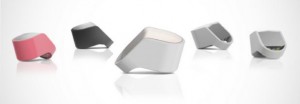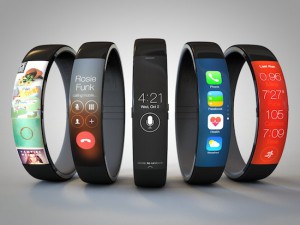3 WAYS HEALTH 2.0 WILL REVOLUTIONIZE DOCTOR/PATIENT COMMUNICATION (PART 2)
To recap from last time, Health 2.0 describes the integration of modern, nonintrusive, user-friendly medical technology into the day-to-day lives of the average person. We learned that a quick doctor’s visit no longer requires a trip to the office – services like these make it possible to have a face-to-face consult via video chat for basic ailments and prescriptions. But conveniences like this are just the beginning of what Health 2.0 may have to offer:
2. Wearing Your Wellness
So you can see your doctor online, but he has questions: How much exercise did you get yesterday? For how many hours, on average, do you sleep each night? Is it restful? How many calories do you typically consume? If you’re like most people, you’ll be answering these questions from your physician with a blank stare. But there is, as the saying goes, an app for that – a number of them actually. And they’re making personal health monitoring possible in ways no one could have imaged even a decade ago.
Start with the personal health monitors worn like a bracelet on the wrist. FitBit and Nike Fuel are two of the most popular models, but there are dozens of varieties on the market. With a footprint smaller than a wristwatch, these devices track your total daily steps and activity level, which is then converted into calories burned, as well as your sleep patterns. The data then transmits wirelessly via Bluetooth technology to an app on your smartphone for your review and analysis – and your doctor’s, should you choose to share.
If wrist-mounted health monitoring seems like the stuff of science fiction, know that it’s just the beginning. Meet theBitBite, a small, plastic device you place in your ear before eating. It just completed a successful $60,000 fundraising campaign for startup money on Indiegogo. According to the campaign page, you tell the device what you’re about to eat (it understands via voice recognition), and it accesses a database and determines how many calories your food contains per bite. It then senses the motion of your jaw and counts how many bites you take for a total calorie count, which it transmits to a Smart Phone app.

To-date, the jury is still out on whether all this knowledge translates into individuals making healthier choices. Knowing and doing, after all, are two very different things. At the very least though, this type of tracking may increase patient awareness, and better equip them to paint their doctor a realistic picture of their lifestyle choices. And for patients who lack the health literacy or English language proficiency to communicate effectively with their doctors, being able to give their doctor this information via technology may literally be a life saver.
Still, maybe jewelry isn’t for you. Maybe you can’t remember your wallet half the time, let alone remember to strap on a handful of wellness monitors before you leave the house. Maybe the thought of popping a piece of plastic into your ear before meals jut seems ridiculous. Never fear, because the future of Health 2.0 is set to make all of that obsolete. Join us next time for part 3…


